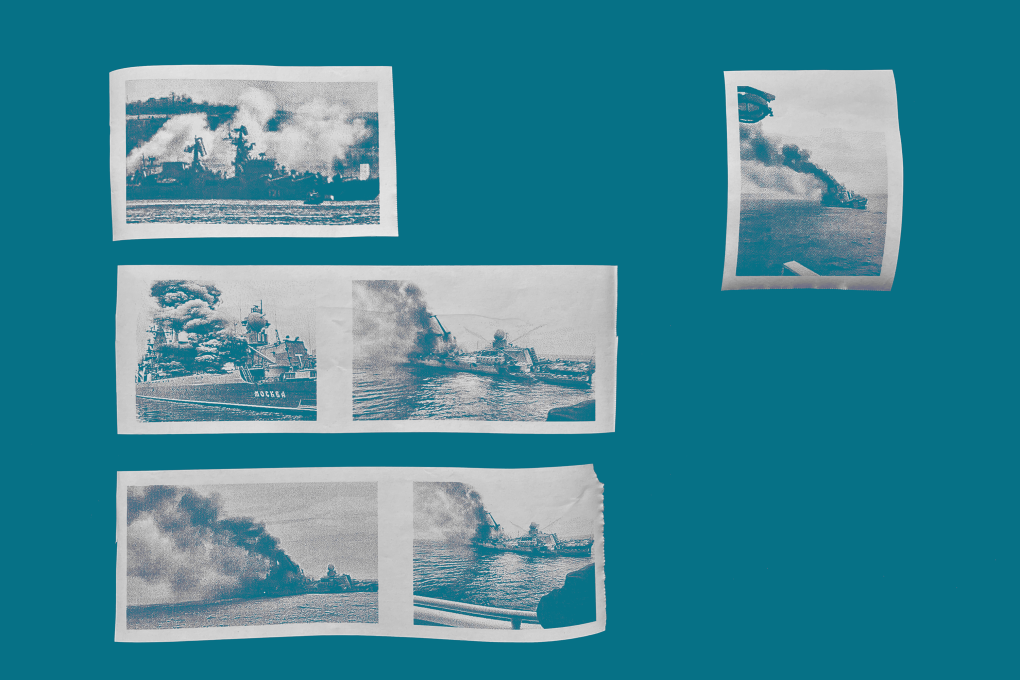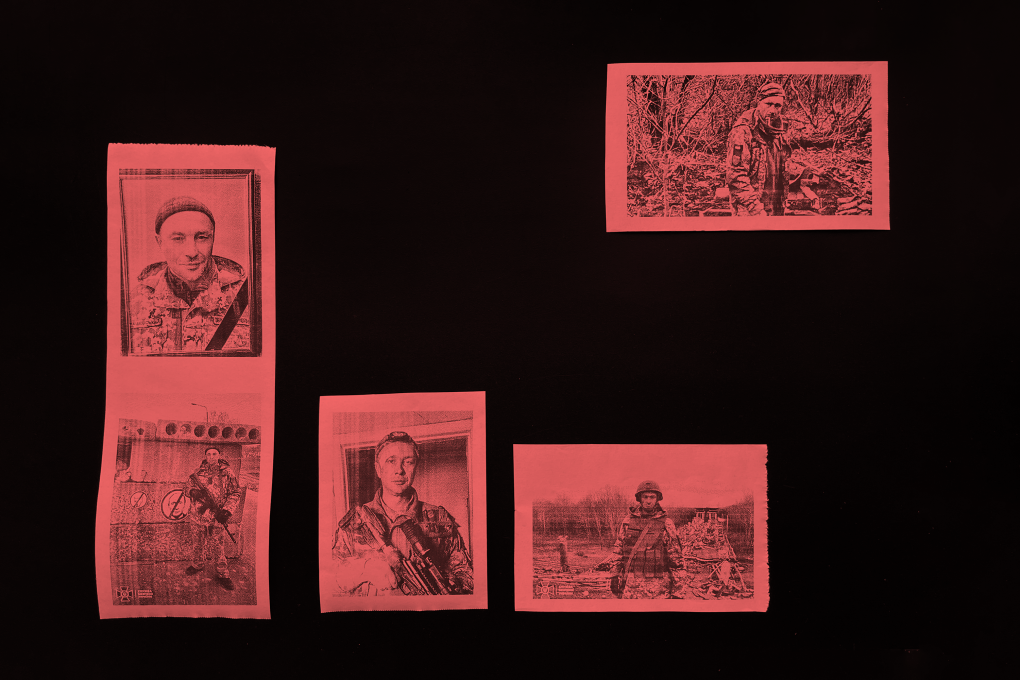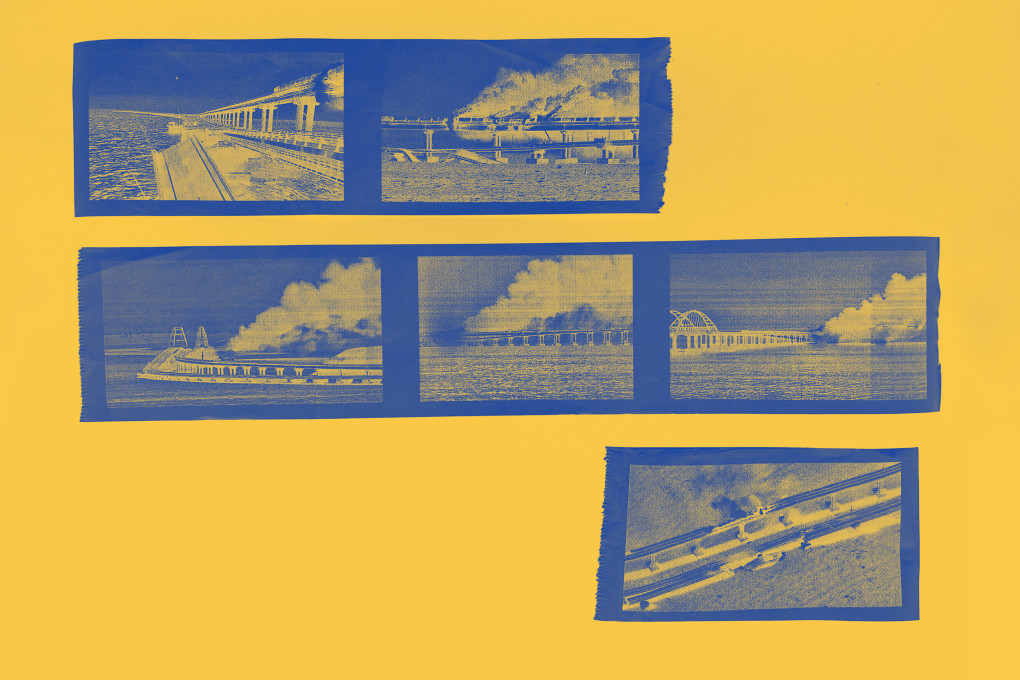- Category
- War in Ukraine
Seven Moments of Courage from Ukraine's Battle Against Russia's Invasion

The Russo-Ukrainian war has been marked by many moments, each shaping Ukraine's identity in profound ways. This existential struggle for the nation has highlighted its people's resilience and determination. Here, we present some key events that captured the world's attention.
Much of Ukraine’s history is incredibly complicated and full of turmoil. Gaining independence was a painstaking process, and echoes of that struggle are still felt today. Ukraine’s notoriety and global appeal largely stem from its resistance against a numerically superior enemy in Russia. The world was inspired by Ukraine’s heroic defense, and through an existential war, an identity was solidified for a country now 27 months into fighting.
There were many pivotal moments along the way, broadcasted across social media and the news, showing the world what Ukraine was capable of and giving Ukrainians a glimpse of their potential future as much of the world rallied around them.
Although many in Ukraine would trade notoriety for a peaceful existence—devoid of years of war—certain moments must be mentioned. These events reverberated across the world and brought Ukraine into the public domain, forever linking those who otherwise would have never known to the Russo-Ukrainian war.
“Russian warship, go fuck yourself!”

On February 28th, 2022, a recording of a transmission between a Ukrainian border guard and the Russian Warship “Moskva” garnished international attention. The small island housed 13 Ukrainian soldiers, whose odds were stacked against their favor when ships from the Russian Navy arrived and called for their surrender via radio.
One soldier’s response was heard across the world when he replied, “Russian Warship Go Fuck Yourself.” The soldiers did eventually surrender, but that resilient act was enough to inspire the entire world through his bravery.
“Russian Warship Go Fuck Yourself” became a brand for Ukrainian resistance. It mobilized millions in the first months of the war and served as a great way to show disapproval of Russia’s invasion at rallies worldwide. The Ukrainian postal service, “Ukrposhta,” had also issued a stamp to commemorate the moment. Now, those stamps are listed for hundreds of dollars on eBay.
Life in shelters

All across the world, images were shown of Ukrainians hiding underground—seeking shelter from Russian missiles that bombard the country daily. In cities like Kyiv, it was the metro stations, and in other cities, it was the basements of buildings at risk of collapse. Over time, the sound of air raid sirens became commonplace, and in many regions, Ukrainians had to adapt to life underground.
Weddings, surprise concerts, and even schools had a new underground venue. Ukrainian air defense may have gotten stronger since the beginning of the invasion, but Russian bombs still make their way into the country—especially to those close to the border with Russia.
“I need ammunition, not a ride.”

Also, on February 28th, President Volodymyr Zelenskyy shocked the world when he turned down the offer to evacuate from Kyiv. Instead, he chose to stay and lead his country, even with the serious threat of his assassination looming. The president told the United States, “The fight is here; I need ammunition, not a ride”.
The President would later release a video of himself and members of his cabinet standing on the grounds of the Office of the President. The footage immediately dispelled any Russian fakes that claimed the President had fled. Zelenskyy assured the world, “Good morning, everybody. Do not believe fake news. I am here”. It was a timely and effective show of solidarity for the millions of Ukrainians who were grappling with the realities of being thrust into an existential war.
Sinking of the Moskva

News of the sinking of the Moskva cruiser ship, the flagship of the Russian navy, had a very special meaning to Ukraine—a country with essentially no navy. The $750M ship was a symbol of Russia’s control over the Black Sea and was pivotal in Russia’s invasion of Crimea. Its destruction was a major moment in Ukraine’s defense and its recognition as a technologically resourceful nation.
The sinking of the ship would also become a great example of the economy of war, where the much smaller Ukrainian army would make the best of limited resources to destroy Russia’s far more expensive equipment.
"To have this go down is going to be a huge psychological boost for the Ukrainians and a jolt for the Russian Navy," said Ben Hodges, former top U.S. Army Commander in Europe.
The defense of Azovstal

On March 2, 2022, Russian forces completely encircled Mariupol, an eastern Ukrainian city. The massive Azovstal Metal Plant, with its extensive system of underground shelters, became the stage for the last stand of the reaming Ukrainian soldiers in the city and a place of safety for hundreds of civilians.
Fighters from the National Guard, including the Azov Regiment, along with the Security Service of Ukraine, Armed Forces, border guards, police officers, and territorial defense forces, fought for 86 days. Despite relentless Russian attacks using aircraft, banned phosphorus shells, artillery fire, and bombs, the defenders held their ground as long as they could.
They faced a dire humanitarian crisis with a severe shortage of food, water, medicine, and ammunition. The lack of medical supplies led to severe consequences for the wounded, many of whom faced amputation or death. Ukrainian helicopter pilots aided the defender through missions involving entering deep into enemy lines to deliver needed aid and evacuate the wounded.
On May 16, 2022, through mediation, the Azov Defenders were ordered to surrender to preserve lives and were subsequently taken to Russian-occupied territories, with many ending up in the Olenivka colony. In July 2022, a staged terrorist attack by Russian forces killed at least 50 defenders of Azovstal.
Many prisoner exchanges have taken place since the start of the war, but Russians are most reluctant to return anyone involved in the defense of Azovstal. Many of their whereabouts and conditions are unknown. To this day, Ukrainians are advocating for the safe return of all of the Azov defenders.
Oleksandr Matsiievskyi’s “Glory to Ukraine”

On March 6th, 2023, a video from Russian Telegram channels was circulating through social media of a Ukrainian soldier standing in a shallow grave, promptly before his execution. His Russian murderers could be heard asking him for his last words. He replied, “Glory to Ukraine”. His words and his bravery in the face of death inspired many. Instead of begging, he defied his captors and showed them and the world what it means to fight for your country.
The Security Service of Ukraine later identified the soldier as Oleksandr Matsiievskyi, a sniper belonging to the 163rd Battalion of the 119th Territorial Defence Brigade in Chernihiv Oblast. In the following days, his image was immortalized, and he became one of the most powerful figures of Ukraine’s resistance.
On March 12th, 2023, President Zelenskyy posthumously awarded Matsiievskyi the title “Hero of Ukraine”.
Liberation of Kherson

On August 29th, 2022, a successful counterstrike began in Ukraine’s sout—seeing a major collapse in Russian lines. It ultimately resulted in their retreat from Kherson, one of the largest cities under Russian occupation. The Russians called it a “goodwill gesture” but to the hundreds of thousands of people freed, it was sweet liberation.
Videos shared of Ukrainian tanks rolling into newly liberated territories, being greeted with flowers, and candid cries of relief were dominating the news space. Ukrainian soldiers rejoiced as they had the opportunity to see what it was they were fighting for. People who endured months of uncertainty finally got their freedom back.
Many moments were captured: dystopian Russian propaganda billboards stating “We are one nation” were ripped off, Russian flags were discarded, and the Ukrainian flag was raised. Families were reunified or finally given closure regarding their loved ones’ well-being.
Damage of the Kerch Bridge

In the early hours of July 17th, 2023, traffic camera footage showed a giant explosion on the Kerch Bridge, a 17-kilometer-long bridge that connects Crimea to Russia. As the largest symbol of Russia’s occupation, the images of the destroyed bridge resonated positively amongst Ukrainians and their supporters, who even created a popular song to encapsulate the symbolic victory.
The explosion was attributed to a commercial truck carrying tons of explosives. The bombing itself had significant effects on the Russians. It showed the significant vulnerabilities of the bridge, which was a major supply line for Russians fighting in Ukraine’s south.
The bombing forced Russia to reshuffle its logistics routes and opt for more tedious methods, like relying on a railway near the contact line for transportation. The explosion and its consequences were seen by many as a precursor to the eventual destruction of the bridge and, ultimately the reclamation of Crimea, which has been occupied since 2014.

-c42261175cd1ec4a358bec039722d44f.jpg)
-46f6afa2f66d31ff3df8ea1a8f5524ec.jpg)
-6359eca46c72bde40a90abaaadd6eaa8.png)
-29a1a43aba23f9bb779a1ac8b98d2121.jpeg)


-206008aed5f329e86c52788e3e423f23.jpg)